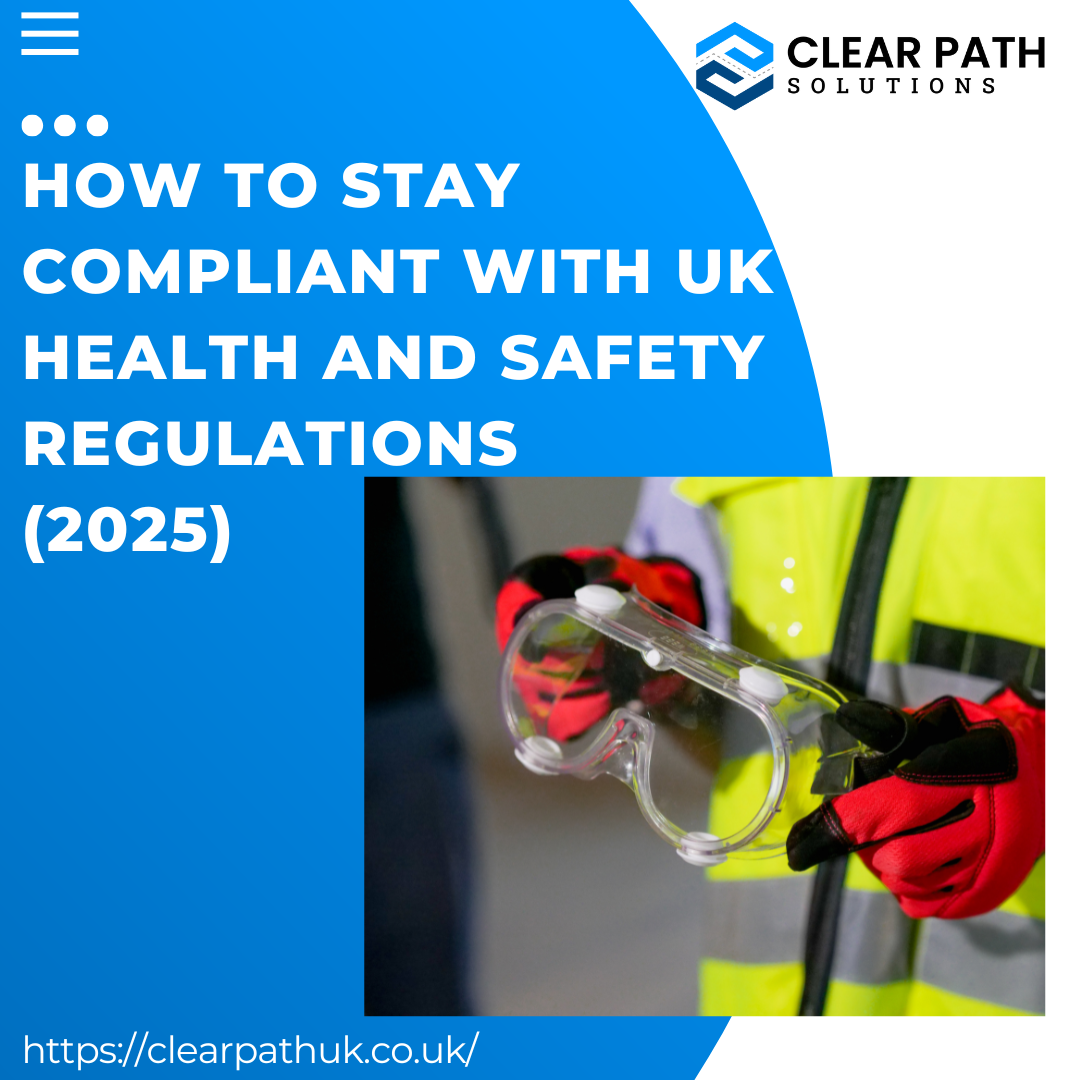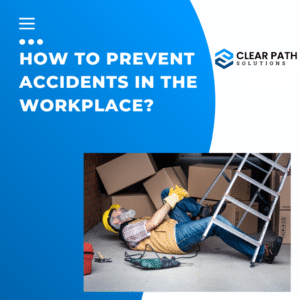How to Stay Compliant with UK Health and Safety Regulations (2025)

Health and safety compliance isn’t just a box-ticking exercise—it’s a core responsibility for UK employers, especially SMEs.
In a time when employee wellbeing, remote work, and regulatory scrutiny are on the rise, business owners must go beyond basics to protect their staff and their business. In this comprehensive guide, we break down what UK employers need to do in 2025 to remain compliant, avoid penalties, and foster a safe and productive working environment.
Why Health and Safety Compliance Matters More Than Ever
Workplace accidents, illness, and mental health concerns have real consequences—for employees, your business operations, and your bottom line.
- In 2023/24, there were over 561,000 workplace injuries and 35.2 million working days lost due to work-related ill health (HSE).
- Fines for health and safety breaches now average £150,000+ per case.
- Health and safety compliance directly impacts employee morale, retention, and your reputation as an employer.
Investing in compliance now can save you from costly incidents later—and it shows your team that their wellbeing is a top priority.
Key Health and Safety Laws Employers Must Follow
Understanding the UK legal framework is essential. Here’s a snapshot of the primary legislation you need to comply with:
Health and Safety at Work Act 1974
- The foundational law requiring all employers to ensure the health, safety, and welfare of employees “so far as is reasonably practicable.”
Management of Health and Safety at Work Regulations 1999
- Requires employers to conduct risk assessments, plan controls, and ensure proper training.
Display Screen Equipment Regulations 1992
- Applies to desk-based and remote workers; mandates workstation assessments and regular breaks.
Reporting of Injuries, Diseases and Dangerous Occurrences Regulations (RIDDOR) 2013
- Obligates employers to report serious workplace incidents, diseases, and near misses to the HSE.
Also check our recent blog on >>
Employer Responsibilities: What You Must Do
Here’s a breakdown of your core duties under UK health and safety law:
Conduct Risk Assessments
- Identify hazards such as faulty equipment, poor lighting, or trip hazards.
- Evaluate risks by determining the likelihood and impact of those hazards.
- Control measures must be put in place—like signage, safety barriers, or PPE—to reduce or eliminate risks.
- Regularly review assessments, especially after incidents, workplace changes, or new staff introductions.
Create a Health & Safety Policy
- Businesses with five or more employees are legally required to have a written policy.
- The policy should clearly state your commitment to safety, outline roles and responsibilities, and include procedures for dealing with risks.
- It should be reviewed annually and easily accessible to all staff.
Appoint a Competent Person
- You must nominate at least one competent person responsible for overseeing health and safety compliance.
- Keep reports and evidence securely stored for reference and inspections.This could be an employee with training or an external consultant such as ClearPath.
- Their role includes monitoring practices, reviewing policies, and ensuring compliance.
Provide Training and Information
- Staff should receive role-specific safety training, including how to identify hazards and respond to emergencies.
- All new employees must undergo a health and safety induction.
- Provide ongoing training and refresher courses, especially when tasks or environments change.
- Use visual aids, handbooks, and e-learning to reinforce safe practices.
Maintain Safe Workplaces
- Ensure workspaces are clean, well-lit, and adequately ventilated.
- All equipment should be regularly inspected and maintained.
- Provide necessary Personal Protective Equipment (PPE) like gloves, helmets, or masks where applicable.
- Conduct routine safety checks and encourage staff to report hazards.
Record and Report Incidents
- Maintain a logbook of all incidents and near-misses, no matter how minor.
- Use this log to identify patterns and areas needing improvement.
- Serious incidents, occupational diseases, and dangerous occurrences must be reported to the HSE under RIDDOR within specified timeframes.
Challenges for SMEs Without Dedicated H&S Support
Small businesses often struggle to keep up due to:
- Limited time and resources
- No in-house H&S specialist
- Lack of up-to-date documentation or training
- Uncertainty about remote/hybrid work compliance
The result? Unintentional non-compliance and increased risk of fines, accidents, and employee dissatisfaction.
How ClearPath Supports Your H&S Compliance
At ClearPath, we help SMEs take control of their health and safety obligations with confidence. Our experienced consultants guide you through compliance, implementation, and staff training.
Our Services Include:
- Custom health and safety policies tailored to your business
- Risk assessment templates and support
- Workstation and ergonomic reviews for hybrid teams
- Training modules (manual handling, fire safety, mental health awareness, and more)
- Incident response guidance and RIDDOR reporting support
- Regular compliance audits to help you stay ahead of legal changes
With ClearPath on your side, you don’t need to be a health and safety expert—we’ll help you build a safe, legally compliant, and productive workplace.
The Benefits of Getting Health and Safety Right
Compliance is more than avoiding penalties. Here’s what you gain:
Fewer Accidents and Sick Days
A well-implemented health and safety program directly leads to fewer workplace accidents, injuries, and illnesses. When you identify hazards and take preventive measures, you reduce the likelihood of incidents such as slips, trips, falls, or exposure to hazardous substances.
This reduction in accidents results in fewer sick days and worker absences, as employees are not physically harmed or falling ill from workplace conditions. According to recent statistics, workplaces with effective health and safety policies report significantly lower rates of absenteeism. For SMEs, this means increased productivity and a smoother workflow without interruptions caused by avoidable incidents.
Improved Employee Morale and Trust
When employees know their health and safety are a priority, employee morale improves significantly. It fosters a culture of care and respect, which can lead to higher job satisfaction.
Employees are more likely to feel valued and appreciated when they see that their employer is committed to providing a safe and supportive work environment.
This trust translates into greater employee loyalty and higher retention rates, reducing the costs associated with recruitment and training new staff. A positive workplace culture rooted in safety also enhances employee engagement, motivating workers to perform their best because they feel secure and supported in their roles.
Legal Protection and Reduced Liability
By adhering to health and safety regulations, your business mitigates the risk of costly legal action due to non-compliance. If an accident or injury occurs and it is found that safety protocols were ignored or insufficient, you could face severe penalties, compensation claims, and damage to your business’s reputation.
Maintaining compliance with laws such as the Health and Safety at Work Act 1974 and RIDDOR protects your business from legal consequences. Regular risk assessments and documentation demonstrate that you’ve done your due diligence, which reduces your exposure to legal risks and helps minimize liability in case of an incident.
Stronger Reputation with Clients and Regulators
A commitment to health and safety doesn’t just protect your employees—it strengthens your reputation in the eyes of clients, partners, and regulators. Clients increasingly value working with businesses that prioritise workplace safety, as it reflects corporate responsibility and good governance. A reputation for safety can also give you a competitive edge when bidding for contracts, as potential clients view you as reliable and responsible.
Additionally, regulators favour businesses that are proactive in ensuring safety, potentially making the regulatory process smoother during inspections. Compliance with health and safety laws shows your dedication to doing business ethically and responsibly, which can foster positive relationships with both regulators and clients.
When your staff feels safe, they work better. And when your policies are robust, your business
runs smoother.
By focusing on health and safety compliance, you’re not just avoiding penalties; you’re creating a work environment that fosters productivity, trust, and long-term success.
Stay Ahead of Compliance in 2025
Whether you’re updating risk assessments or rolling out remote work policies, don’t go it alone. Let ClearPath help you meet your legal obligations and protect what matters most—your people.
👉 Book a free consultation with ClearPath today.
📞 Call | 📧 Email | 🌐 clearpathuk.co.uk






